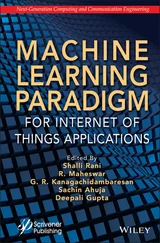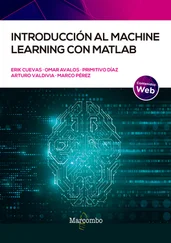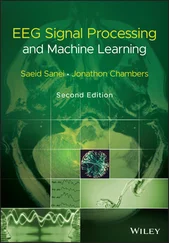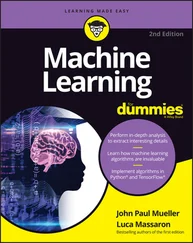Chapter 5works on disease prediction to develop an intuitive understanding of fundamental design principles. These concepts are carried to their fullest complexity with neural networks and their learning. The working of artificial neurons and the architecture stands in stark contrast with their biological counterparts.
Chapter 6introduces machine learning as a public safety tool. A solid discussion on the relationship between public safety and video surveillance systems is provided. The topic of offline crime prevention leads to the extremely important topic of public safety, which is discussed in the context of machine learning theory.
Chapter 7introduces semantic web ontology, multi-agent system in a semantic framework, decision-making ontology and query optimizer agent. These unified methods open up a new avenue of research.
Chapter 8focuses on the detection, prediction and intervention strategies of attention deficiency in the brain. These important topics are missing from many current texts on machine learning.
Chapter 9summarizes the issues concerning the progression of osteoporosis using machine learning and the treatment models, and culminates in the presentation of K-nearest neighbor and decision tree algorithms.
Chapter 10covers the issues in biomedical text processing and the food industry. It addresses the latest topics of face recognition systems for domestic cattle, assortment of vegetables and fruits, plant leaf disease detection and approaches for sentiment analysis on drug reviews.
Chapter 11discusses hyperparameter tuning of the MobileNet-based CNN model and also explains ResNet5.0. It presents a variety of important machine learning concepts found in the literature, including confusion matrix and classification results.
Chapter 12presents a detailed introduction to the theory and terminology of deep learning, image classifier, and data preprocessing with augmentation. It talks about malaria cell detection and finally the results are tabulated in a meaningful manner for further fruitful research.
Chapter 13considers various approaches for the design of transfer learning, including CNN architecture with ROC curve as a core neural network model, which can incorporate human expertise as well as adapt themselves through repeated learning.
Chapter 14provides a model for early stage detection. It gives a variety of application examples in different domains such as multivariate regression, model building, and different learning algorithms.
Chapter 15presents the concept of using the internet of things (IoT) in healthcare applications. It focuses on networking system using the IoT, smart hospital environments, emerging vulnerabilities and threat analysis.
Chapter 16explains real-time health monitoring. It proposes a framework for model construction, supervised learning, neural networks for classification and decision-making. An application is presented that supports health monitoring by implementing IoT concepts. A multiple linear regression algorithm and random forest algorithm are used to map the requirement of distance health monitoring.
Chapter 17introduces ontology in healthcare. It also explains NLP-based retrieval for COVID-19 dataset. Query formulation and retrieval from a knowledgebase are handled in an effective manner. Included are several examples in the literature to travel further in this research direction.
Chapter 18summarizes the topics necessary for COVID-19 research. It details the public discourse and sentiment during the coronavirus pandemic. Moreover, how to understand text semantics and semantic analysis using social media are explained.
Chapter 19is devoted to basic COVID-19 research and its relationship to various data mining techniques. Prediction and analysis of COVID-19 dataset, dataset collection, backpropagation neural network, and several algorithms are discussed in detail.
Chapter 20details automated diagnosis of COVID-19. Topics treated include the feature extraction, genetic algorithm and image segmentation technique. The presented approach provides a description of both the chosen approach and its implementation.
Chapter 21provides users and developers with a methodology to evaluate the present system. It focuses on the future of telemedicine with machine learning. The state-of-the-art, existing solutions and new challenges to be addressed are emphasized. Fast electronics health record retrieval, intelligent assistance for patient diagnosis and remote monitoring of patients are discussed very clearly.
Chapter 22discusses the challenges faced by chronic disease patients and the lightweight convolutional neural network used to address these challenges. Experimental results are tabulated, leading to active research in the healthcare field
Chapter 23discusses disease diagnosis. Active solutions using machine learning techniques are given along with the generalize tools used to implement the concepts. A wide range of research areas are also given for future work.
Chapter 24explains the detection of disease and its related solution in machine learning. The chapter continues with the treatment of machine leaning algorithms that are dynamic in nature. It presents a number of powerful machine learning models with the associated learnings. A discussion section is provided that briefly explains what can be computed with the models.
Finally, we would like to sincerely thank all those involved in the successful completion of the book. First, our sincere gratitude goes to the chapters’ authors who contributed their time and expertise to this book. Second, the editors wish to acknowledge the valuable contributions of the reviewers regarding the improvement of quality, coherence, and content presented in the chapters.
The EditorsFebruary 2021
Part 1 INTRODUCTION TO INTELLIGENT HEALTHCARE SYSTEMS
1
Innovation on Machine Learning in Healthcare Services—An Introduction
Parthasarathi Pattnayak1 * and Om Prakash Jena2
1School of Computer Applications, KIIT Deemed to be University, Bhubaneswar, Odisha, India
2Department of Computer Science, Ravenshaw University, Cuttack, Odisha, India
Abstract
The healthcare offerings in evolved and developing international locations are seriously important. The use of machine gaining knowledge of strategies in healthcare enterprise has a crucial significance and increases swiftly. In the beyond few years, there has been widespread traits in how system gaining knowledge of can be utilized in diverse industries and research. The organizations in healthcare quarter need to take benefit of the system studying techniques to gain valuable statistics that could later be used to diagnose illnesses at a great deal in advance ranges. There are multiple and endless Machine learning application in healthcare industry. Some of the most common applications are cited in this section. Machine learning helps streamlining the administrative processes in the hospitals. It also helps mapping and treating the infectious diseases for the personalised medical treatment. Machine learning will affect physician and hospitals by playing a very dominant role in the clinical decision support. For example, it will help earlier identification of the diseases and customise treatment plan that will ensure an optimal outcome. Machine learning can be used to educate patients on several potential disease and their outcomes with different treatment option. As a result it can improve the efficiency hospital and health systems by reducing the cost of the healthcare. Machine learning in healthcare can be used to enhance health information management and the exchange of the health information with the aim of improving and thus, modernising the workflows, facilitating access to clinical data and improving the accuracy of the health information. Above all it brings efficiency and transparency to information process.
Читать дальше












